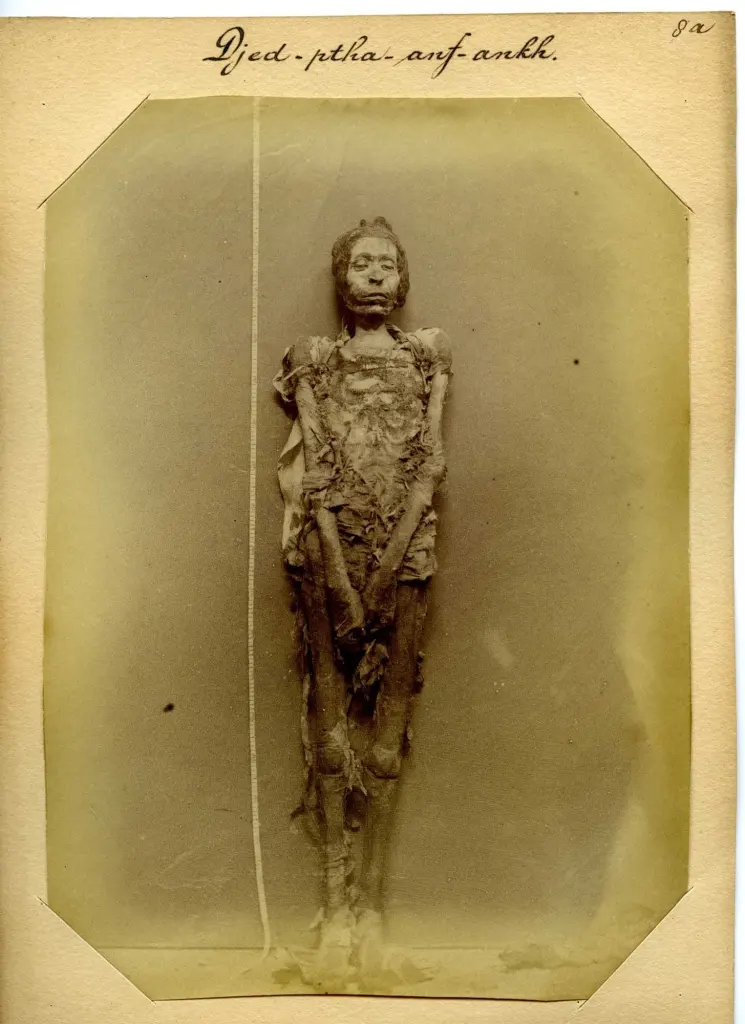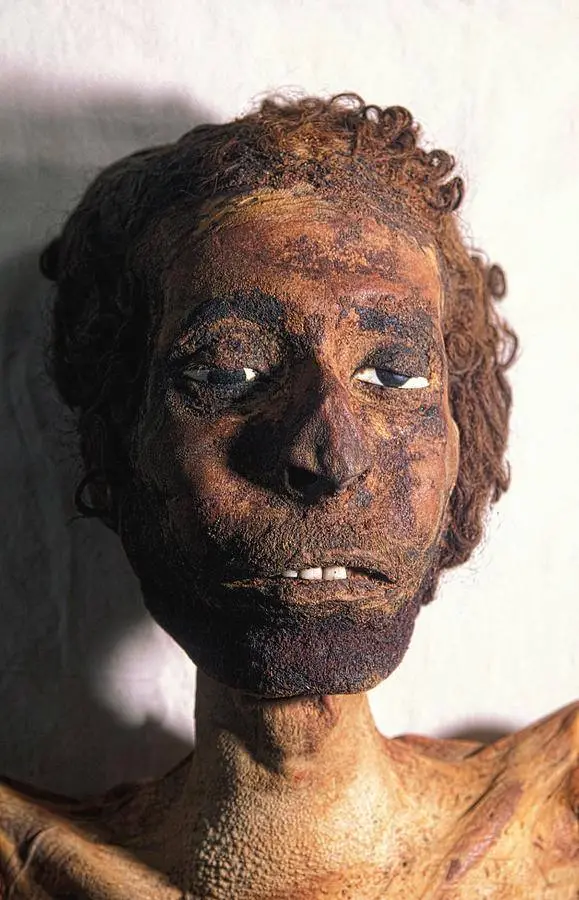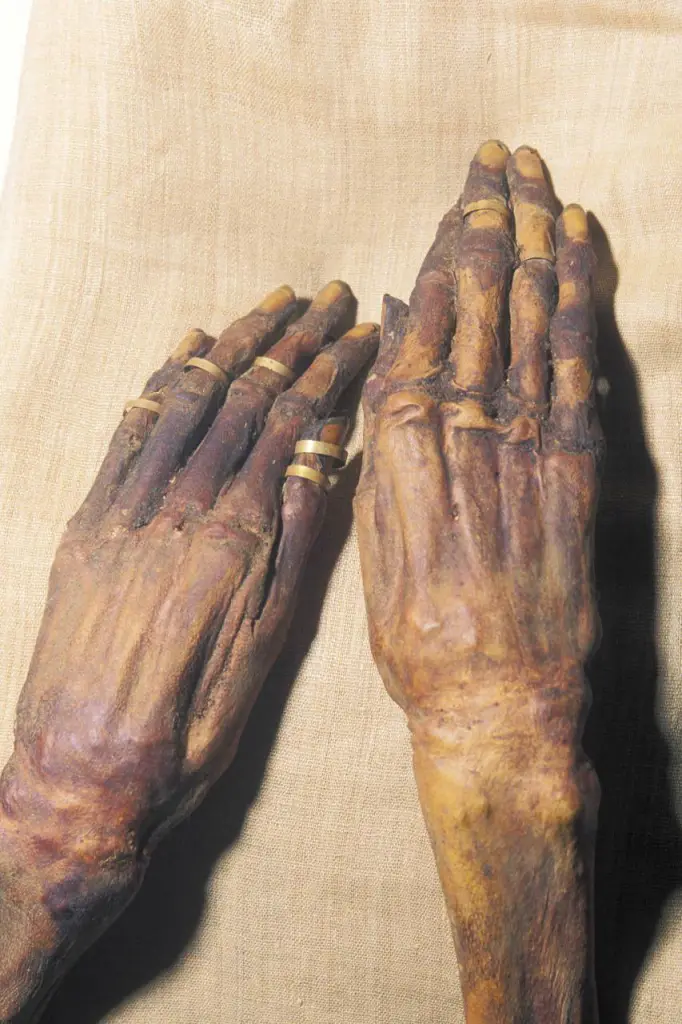Djed-Ptah-Iuf-Ankh was a priest whose mummified remains revealed he died as a young man. He was buried at Deir el-Bahari Cachette (DB320), West Thebes. During Shoshenq I’s reign in the 22nd Dynasty, Djed-Ptah-Iuf-Ankh held the title of “Second Prophet of Amun.”

Djed-Ptah-Iuf-Ankh is known solely from his burial and mummy. In addition to his priestly title, he was the District Governor and held the titles “King’s Son of Ramesses” and “King’s Son of the Lord of the Two Lands.” These titles suggest he might have been related to the royal family of either the 21st or 22nd Dynasty. It is conjectured that Djed-Ptah-Iuf-Ankh was the husband of Nesitanebetashru (A), a daughter of Pinedjem II and Neskhons, based on their adjacent burials in DB320.

Inscriptions on his mummy’s bandages and coffin indicate that he died around the middle of Shoshenq I’s reign. He was interred in Deir el-Bahari Tomb 320 or DB320, which was the family tomb of the 21st Dynasty High Priest of Amun, Pinedjem I. Embalmers of this period aimed to make the deceased appear alive. The mummy of Djed-Ptah-Iuf-Ankh features incredibly realistic-looking eyes made of white stone with a black circle, inserted under half-closed lids. Egyptologists suggest this new treatment of the eyes was intended to depict the embalmed body as a funerary statue, aware and ready to interact with the world.

By placing realistic artificial eyes into empty sockets, craftsmen made the mummy look awake, a significant departure from previous dynasties’ customs of presenting the embalmed individual with closed eyes as if asleep.

The Deir el-Bahari Royal Cachette, DB320, was discovered in the 19th century and gained fame for containing a cache of many significant New Kingdom royal mummies, including those of Amenhotep I, Ramesses II, Ramesses III, Ramesses IX, Thutmose I, Thutmose II, and Thutmose III.
Three separate mummy bandages dating to Years 5, 10, and 11 of Shoshenq I were found on Djed-Ptah-Iuf-Ankh’s body. His burial was found intact and undisturbed, and his mummy was unwrapped by Gaston Maspero in 1886. Among the jewelry found on his body were gold rings, amulets, and a uraeus, among other items.




